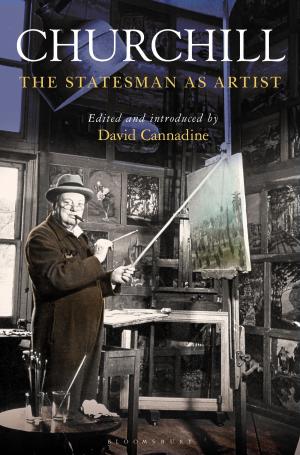| Author: | Dr Stephen Bull | ISBN: | 9781844864294 |
| Publisher: | Bloomsbury Publishing | Publication: | April 6, 2017 |
| Imprint: | Conway | Language: | English |
| Author: | Dr Stephen Bull |
| ISBN: | 9781844864294 |
| Publisher: | Bloomsbury Publishing |
| Publication: | April 6, 2017 |
| Imprint: | Conway |
| Language: | English |
What did the British or American soldier know about the German Army? Was this knowledge accurate - and just how did he know it? There have been several 'handbooks' of Second World War armies, but they never tell us exactly what the Allied soldier knew at the time, or how he was informed. This is of importance because it influenced both conduct on the battlefield, and the way in which the soldier thought about his enemy. The book explains the background history of the organisations involved, followed by short chapters based around a series of original documents. This puts the original into context and also discusses whether the document that follows was correct in the picture it painted, and what can be deduced about sources and the concerns of the intelligence officers who compiled the material. Most of the documents were produced at the time, by the British War Office or US War Department, and cover different aspects of the German Army, including tactics, weapons, and uniforms.
Subjects include: Allied intelligence on the German Army from 1930 onwards, British SIS / MI6 and US Military Intelligence. The organisations responsible, how they worked, and how they changed very rapidly with the coming of war. The role of technology, modern – like the radio transmitter, ancient – as in scouring libraries and periodicals, reports on military manoeuvres and parades. Limitations of 'Ultra' The German army itself, from the tiny force left after Versailles, to the rapid expansion in the late 1930s. Innovation in tanks, tactics, machine guns, rocket weaponry. The problems of gathering intelligence, not just danger, but finance, asking the right questions and the limitations of reporting and distribution.
What did the British or American soldier know about the German Army? Was this knowledge accurate - and just how did he know it? There have been several 'handbooks' of Second World War armies, but they never tell us exactly what the Allied soldier knew at the time, or how he was informed. This is of importance because it influenced both conduct on the battlefield, and the way in which the soldier thought about his enemy. The book explains the background history of the organisations involved, followed by short chapters based around a series of original documents. This puts the original into context and also discusses whether the document that follows was correct in the picture it painted, and what can be deduced about sources and the concerns of the intelligence officers who compiled the material. Most of the documents were produced at the time, by the British War Office or US War Department, and cover different aspects of the German Army, including tactics, weapons, and uniforms.
Subjects include: Allied intelligence on the German Army from 1930 onwards, British SIS / MI6 and US Military Intelligence. The organisations responsible, how they worked, and how they changed very rapidly with the coming of war. The role of technology, modern – like the radio transmitter, ancient – as in scouring libraries and periodicals, reports on military manoeuvres and parades. Limitations of 'Ultra' The German army itself, from the tiny force left after Versailles, to the rapid expansion in the late 1930s. Innovation in tanks, tactics, machine guns, rocket weaponry. The problems of gathering intelligence, not just danger, but finance, asking the right questions and the limitations of reporting and distribution.















